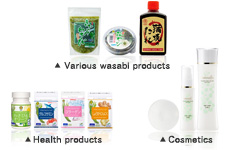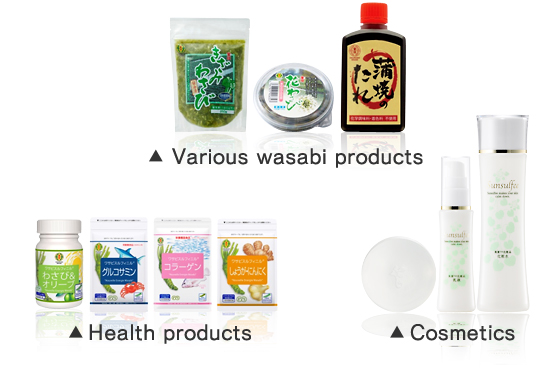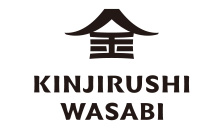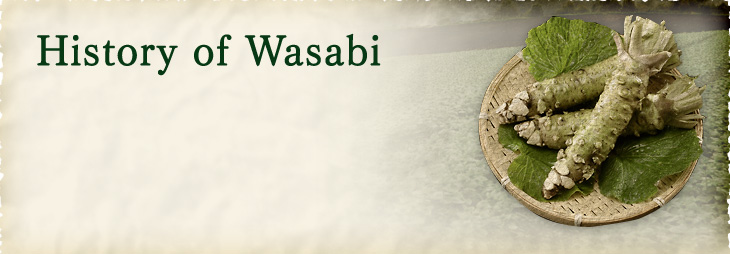Wasabi, now a crucial part of Japanese food culture, is known to have been used since the Asuka period. We also know that wasabi was used medicinally at this time.
The Archaeological Institute of Kashihara, Nara Prefecture, which investigated wooden strips used for writing found in the remains of Enchi (garden pond) in Asuka, Nara Prefecture, stated that, "the excavated wooden strips are anywhere from eight to 30 cm long, and contain names of plants that are likely wasabi or medicinal plants, as well as the names of administrative institutions that managed the garden." This discovery indicates the possibility that vegetables and medicinal plants were cultivated in the garden, suggesting that this was a location for growing medicinal plants, rather than a place meant merely for leisure. "Wasabi Sansho" is written on the wooden strip shown to the right. It is the oldest known such strip in Japan. It includes indentations on the top and bottom, and was likely used as a label on a container for storing wasabi.
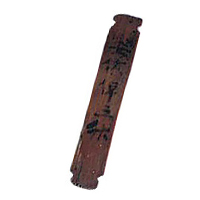
Wooden strips used for writing, excavated from an herb garden dating back to the Asuka period
The word "wasabi" can be found in "Honzo Wamyo," Japan's oldest encyclopedia of medicinal plants. This also tells us that wasabi was used medicinally at this time. The "Engishiki," Japan's oldest collection of laws and customs, also mentions wasabi, and we know that it was collected as a tax from states around the capital, such as Wakasa, Echizen, Tango, Tajima, and Inaba. The "Wamyo Ruijusho" also mentions wasabi.
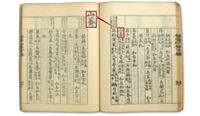
"Honzo Wamyo,"
Japan's oldest encyclopedia of medicinal plants
It is thought that wasabi was first cultivated in the early Edo period. Upon being presented with wasabi, Tokugawa Ieyasu—said to have been a gourmet who lived a comparatively long life—fell in love with the ingredient, and since the wasabi leaf resembles the hollyhock that was used as the Tokugawa family crest, he is said to have treasured the plant, keeping it inside his territory. During the Keicho era (1596–1615), Utogi (currently Shizuoka-shi) was founded upstream from the Abe River with Mochizuki Rokuroemon as head. It is said that the history of wasabi cultivation begins in this area.

The hollyhock:
the family crest of the Tokugawa family
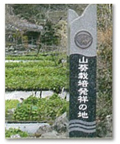
The cradle of wasabi cultivation
(Shizuoka, Utogi)
Wasabi is first thought to have begun being used in the modern way as a seasoning for sushi during the Bunka/Bunsei era of the Edo period (1804–1830).
The idea of hand-formed sushi with wasabi resulted in a sushi boom throughout Edo, which then spread to the common people.
Back then, there were no refrigerators or refrigerated facilities. It is thought that people back then used wasabi because they knew from experience that it acted to reduce the fishy smell of food, stop bacteria from growing, and prevent food poisoning.

Ukiyoe depicting sushi
(Utagawa Hiroshige)
Refrigeration and distribution technologies had not yet developed during the early Taisho period, but society took a hint from tea processing and began drying and powdering wasabi—this was the birth of powdered wasabi. After that, powdered wasabi made from horseradish was developed. Then in 1971, this developed into wasabi paste in small packets, and finally in 1973, developed into fresh grated wasabi which uses the kind of wasabi used most often today.

KINJIRUSHI
powdered wasabi

KINJIRUSHI
wasabi paste
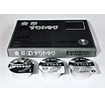
KINJIRUSHI fresh grated wasabi
KINJIRUSHI now offers a wide range of wasabi products including flower wasabi and finely chopped wasabi, which have become widely used for not only Japanese foods but also for meat dishes and Western foods. We have also developed health products and cosmetics derived from components in wasabi, that offer a range health and beauty benefits, such as detoxification, antioxidation, circulation improvement, and skin repair.
